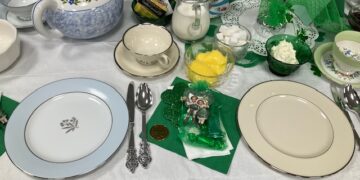July is here, and I have a garden update! While my spinach was officially taken from me by the fuzzy backyard bandit, my new inflatable snake from Amazon actually saved the tiny kale plants that were starting to disappear as well. They are still pretty small as they were “trimmed” at a tender age, but eventually I may just have a bowl of kale. If you’re willing to brave the inflatable snake route, I can at least attest that it worked in my backyard with my raised bed.
While going about my travels around the internet, I discovered that Virginia has over 400 native bees buzzing around our state. The first bee that likely comes to mind might be the honey bee. I was surprised to find that while essential in pollination for our plants and veggies, Apis mellifera are not native to the United States! They were brought over with early colonists in the 1600s and have been thriving ever since. It is important to preserve these little lives as they are essential to our planet, but I thought it was important to bring a few of our native bees to light.
I was pleased to find that the bumblebee, or Bombus, is a native to Virginia. My wonderful late grandmother had an affinity for these large fuzzy creatures, and has since passed her love of them to me. She once told me she had one as a pet that was so tame she could tie a string gently around its leg and have it with her all day! Nowadays whenever I see one bending over a lavender stalk I imagine it is her stopping by to check on her oldest granddaughter. Bumblebees live in colonies like honey bees, but are much smaller in size. They also are considered generalists when it comes to what they like to pollinate, which means they aren’t picky eaters.
Another native bee species that we have here in Virginia is the carpenter bee, or Xylocopa. Xylocopa means “wood-worker”, and these solitary bees may be more problematic than other bees as they tend to bore holes into wood, including houses and barns. They are solitary bees and are often confused for bumblebees because of their large size. While they may appear to be territorial, these bees cannot sting and mean you no harm despite their heft and disposition when being disturbed. They help pollinate blueberries, tomatoes and melons among other plants but because of their large size tend to avoid more tubular flowers and plants.
A lot of folks will be familiar with another native bee species here–the infamous sweat bee. The family Halictidae encompases a large family of small bees that get their name from their affinity for the salt in human sweat. Their colors vary from black to brown to even a lovely shiny green. They nest underground or in rotting wood, and are actually solitary by nature. They are generalist pollinators, but their small size makes them extra helpful for smaller, tubelike plants. Wildflowers especially appreciate their pollinating skills.
The remaining two groups of native bees are less familiar to me, but equally as fascinating. Leafcutter bees of the family Megachilidae are a large group of bees that are native to the United States. The word “megachile” means “large-lipped” and refers to the bee’s large jaw that helps them cut leaves to provide material for their nests. If you ever see a large chunk cut out of a leaf in your garden (and a rabbit is not to be blamed!), perhaps you provided a component of a leafcutter bee’s nest. Solitary in nature, these bees are great for pollinating many plants but have an affinity for sunflowers and members of the aster family.
Mining bees are the final group of native Virginia bees that I wanted to mention. If you ever see holes in the ground that seem too small for any other creature, perhaps you are looking at the handiwork of a mining bee or andrena. Unlike other bees, these can tolerate cold pretty well and are often some of the first bees to make their appearance in early spring. As a result, they are really beneficial to get the garden balls rolling with pollinating early blooming plants. While they are great pollinators for commercial crops such as blueberries and onions, those that emerge later in the year feast on black eyed susans, coneflowers and sunflowers to name a few. If you ever see a tiny mound of dirt on the ground, you may be near the home of a mining bee!
I am sure there are several other fascinating native bees flitting about this time of year, but these are the main Virginia residents. While the honey bee crisis is important and alarming, what is even more alarming are the declining numbers in our native populations as well. It is essential to help these beautiful insects by planting native Virginia plants and not using harmful chemicals on our gardens and flower beds to remove pests of the critter and weed variety. July is prime blueberry season, and if you find yourself out among the blueberry bushes please remember to thank the bees.
































